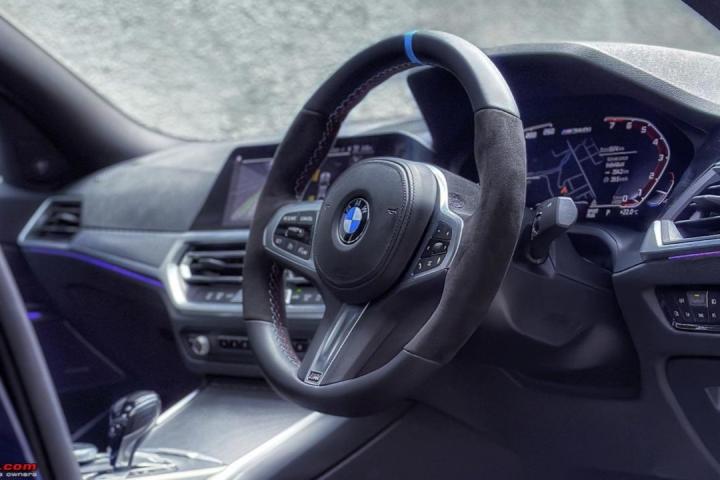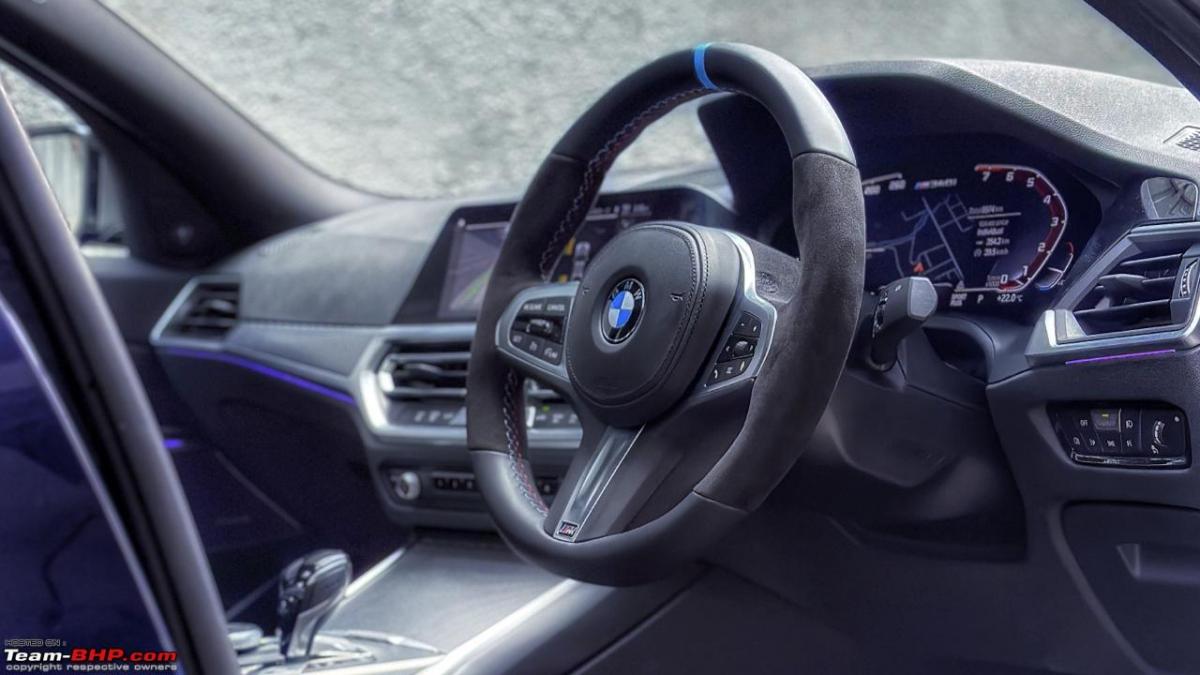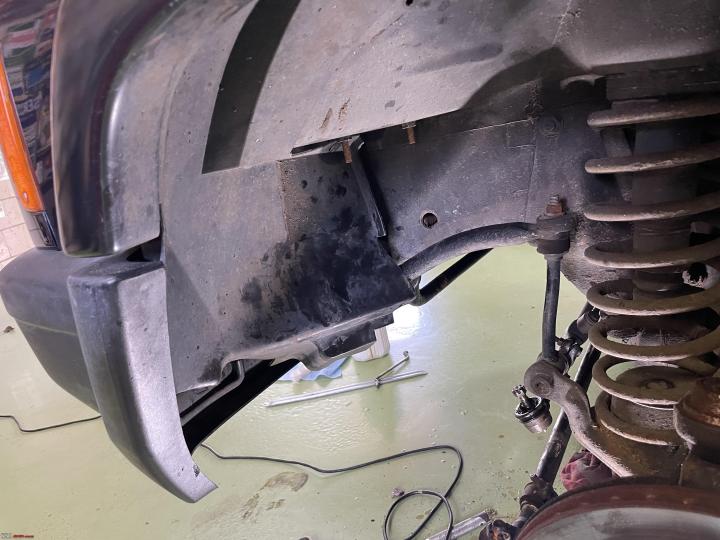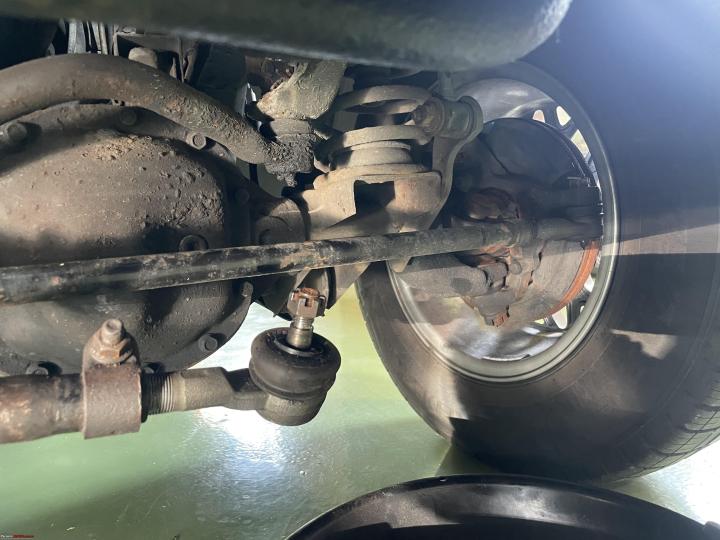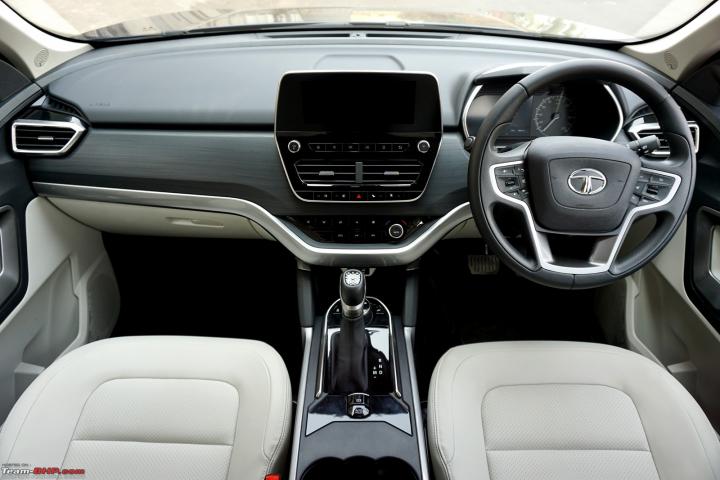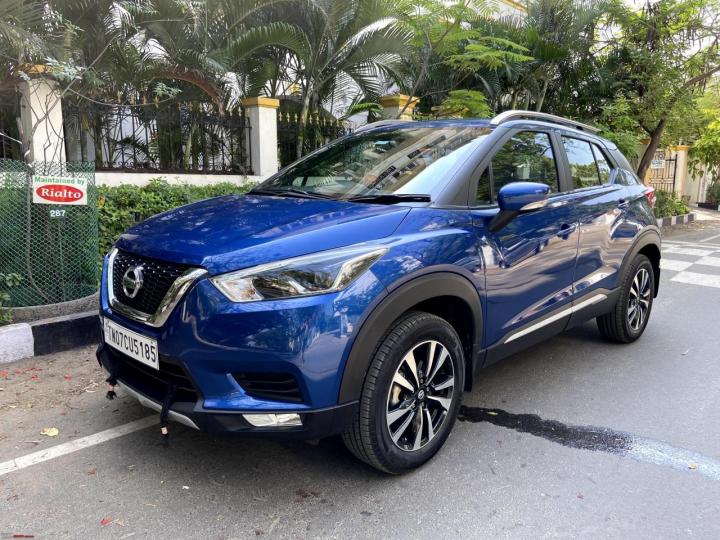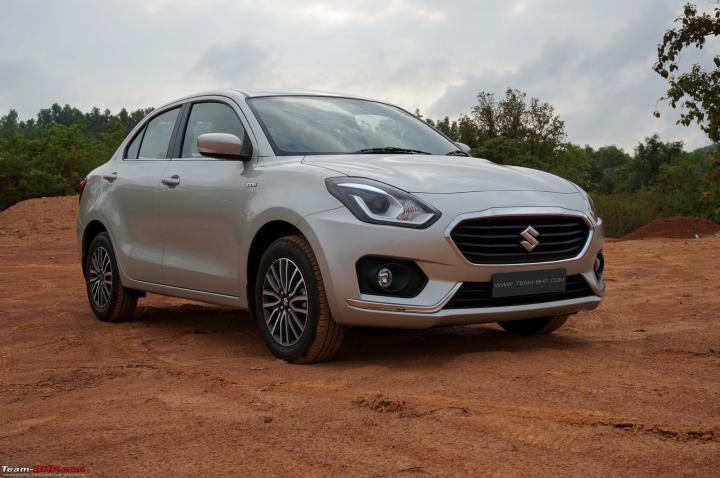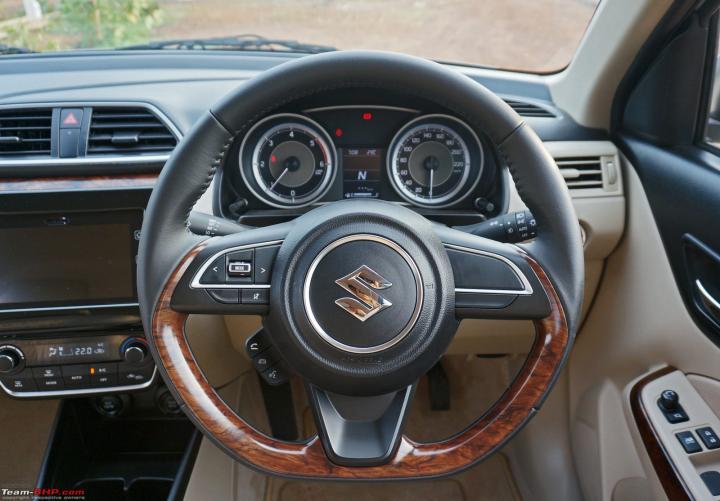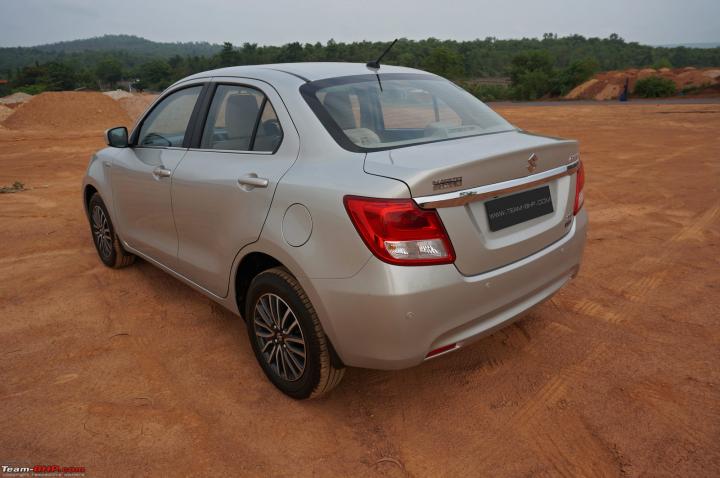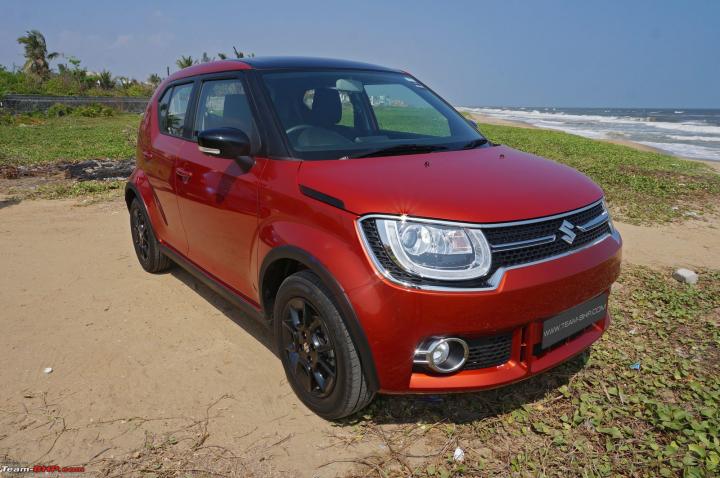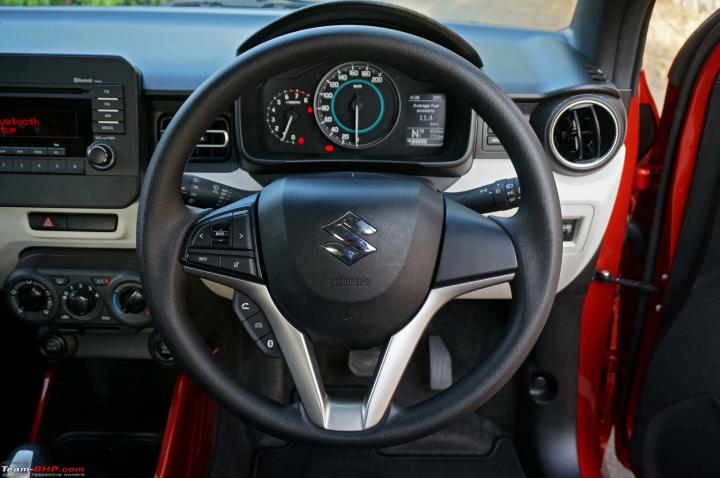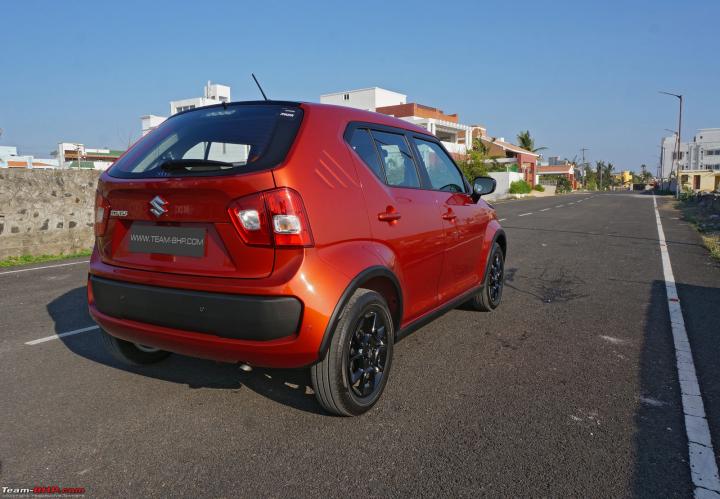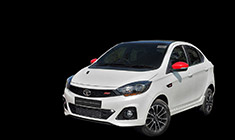News
Steering wheels: Enthusiasts share their preffered shape & type
Traditionally, steering wheels have been either round or flat bottomed, which are the most ergonomically sorted designs.
BHPian CentreofGravity recently shared this with other enthusiasts.
In the recent past, OEMs have been playing around with different designs for the steering wheel. Traditionally, steering wheels have been either round or flat bottomed, which are the most ergonomically sorted designs. The only difference was in the number of spokes in the steering wheel. Cars like the Tata Indigo had a four spoke steering, whereas the Maruti 800 came with a two spoke unit; most other cars had three spoke units. In the last decade or so, manufacturers have showcased radical steering wheels in their concept cars, however, they have now started making their way into production cars as well. Tesla received flak for its yoke in the Model S, and Lexus followed suit and launched the RZ with a yoke too. In 2022, BMW filed a patent for a yoke. More recently, Peugeot have decided to make rectangular steering wheels from 2026. All this makes one wonder, what was wrong with the age old design of the steering wheel in the first place? In this thread, let's discuss the various steering wheel designs and what your preferences are. Let's keep this discussion limited to just the designs and functionality of the wheel, and not steering technology like HPS, EPS, steer-by-wire, etc.
Two spoke steering wheel

This design is employed by cars like the Tata Nexon, Hyundai Verna, Hyundai Ioniq 5, Kia EV6, MG Comet, all Skoda cars, and erstwhile cars like the Tata Nano, Chevrolet Spark, old Maruti cars and many more. As the name suggests, there are two spokes in this type of steering wheel .
Three spoke steering wheel

This is the most common type of steering wheel and can be seen in most cars like the Volkswagen Virtus, Honda Elevate, Kia Sonet, etc. I wouldn't be surprised if most people vote for this type of steering because it has been the most used type across OEMs for years. Personally, I prefer a good old three spoke unit.
Four spoke steering wheel

In the earlier days, four spoke steering wheels were generally used in larger and more expensive cars like the Tata Safari, OG Honda City, some versions of the Tata Indigo, and present day models like the Hyundai i20, Creta, Venue and Tucson, Tata Safari and Harrier, all Land Rovers, etc. I associate four spoke units with larger cars and find it odd in smaller cars and jacked-up hatchbacks.
Flat bottomed / D-cut steering wheel

Here, the bottom part of the steering wheel is flat. Such steering wheels are generally associated with sporty cars. Steering wheels with two, three or four spokes may have a flat bottom. These can be found in the Skoda Rapid, VW Taigun, Hyundai Creta, Kia Seltos, etc.
Yoke
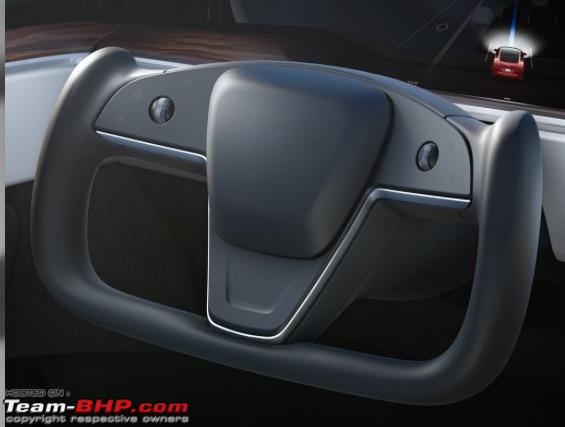
Yoke of the Tesla Model S

Lexus RZ450e's yoke
These are unconventional in shape, ditching the round steering for an impractical shape like a rectangle. They do look cool, but they are the perfect example of 'form over function'. Thanks to the criticism, Tesla decided to offer the yoke as an option in the Tesla Model S and Model X, as opposed to it being standard fitment earlier. It remains to be seen how Peugeot executes its 'hypersquare', though I think it won't be as easy to use as a regular steering wheel. Do note, a yoke may not be as impractical if steer-by-wire tech is implemented with it as the turning range reduces drastically.
As for my preference, I wouldn't want a yoke or a polygon shaped steering wheel; as long as it's a round steering wheel and the wheel design appeals to me, I don't mind the number of spokes. If I had to choose though, I'd go with three spokes.
BHPians, your turn!
Here's what GTO had to say on the matter:
2-spokes is too less, while 4 is too many. My choice is 3-spoke . From Karan's thread, now this is a steering done right.
Here's what BHPian lamborghini had to say on the matter:
So a lot of this stems from the cars we were first introduced to with these respective steerings. For instance the 2 spoke is reminiscent of the 800, Alto which the mind perceives as being more budget oriented - of course there are exceptions to the rule (such as the newer Hyundai designs, the good old Zen, etc.) but for most part, it appears as though something is missing.
3 spoke, flat bottom steerings are love and my pick if designed well - sporty, comfortable, and convenient. When driving the flat bottom is convenient for us bigger folk & the feel is much more sportier.
On that note, I have nothing against 4 spokes - but again having seen them on old school Germans such as Mercs & Audis - the vibe is more luxury with a little bulky feel but this is fast changing : again as seen on some recent Hyundais.
Here's what BHPian MotorDev had to say on the matter:
Great thread .
- I like steering wheels with three spokes.
- They make the dashboard look nice and complete.
- Three-spoke steering wheels are better to hold onto because they provide a good grip.
Here's what BHPian Sphere had to say on the matter:
Personally I like the 3 and 4 spoke steering wheels. I own a Maruti Ertiga and the 2024 Tata Safari which have 3 and 4 spokes respectively.
2 spoked steering wheels look incomplete. The only 2 spoke wheel I like is the one in the Slavia.
Here's what BHPian MyLife_MyCar had to say on the matter:
Though I drive a car with a 2-spoke wheel, I’d prefer a 3-spoke wheel any day.
- 2 feels incomplete and hollow.
- 4 feels like someone whose limbs are stretched out and tied to the wheel.
Just the imagination of driving a yoke type makes me feel uncomfortable.
Read BHPian comments for more insights and information.
News
Fixing a steering issue on my 1998 Jeep Cherokee
It does appear to have a very similar adjustment as my Mercedes W123 steering box and also the Alfa Spider original ZF box.
BHPian Jeroen recently shared this with other enthusiasts.
This morning I had a quick look at the steering of my Jeep. I noticed it has some play in, despite having all the various ball joints replaced.
I looked up whether the steering box can be adjusted. My Jeep Workshop manual has a whole chapter dedicated to taking it apart and putting it back together again. But I am unsure how to adjust it, when not having it taken it apart. It does appear to have a very similar adjustment as my W123 Steering box and also the Alfa Spider original ZF box. I checked on the Jeep forum and people confirmed you could adjust it.
In all honesty, adjusting steering boxes is never a good idea. My experience is, if a Steering Box needs adjusting it is almost on its way out. It might last a bit more with a little less play, once adjusted, but it won’t last.
Very easy to get access to the adjustment bolt. I just had to take the electrical fan out. Two bolts and an electrical connector that’s all.

Next I marked the original position of the adjustment bolt/locking nut. Undid the locking nut and turned the adjustment bolt till I felt no more play.

Took the Jeep for a quick test drive. I felt the steering was a bit too tight. The steering wheel would not return back to neutral after taking a corner. So I backed off the adjustment bolt a bit. Had to do so a few times. In the end, I was reasonably happy. Still some play left, but no stiffness felt anymore.
I have contacted Rini, the guy who also overhauled my W123 steering box. He can do the Jeep box too. But I can also get a new one in the USA for only a little extra money. So I might do that. I just need to make sure I get the correct one.

I called my Jeep parts specialist Edwin and luckily he had a steering box in stock. So I quickly drove over and picked it up, including two new hoses. Also picked up some steering gear fluid, ATF.
Edwin also lend me his special pitman arm puller!

All new shiny parts and fresh ATF

First thing I did was to suck out the fluid reservoir of the hydraulic pump. Could only get about 400 ml out, the system holds about 1.2l So the rest is inside the pump, the hoses and the steering box itself. Always be careful these hydraulic oil. They are very corrosive, especially on paint!!

I had hoped to take the pitman arm and nut off, with the steering box still attached to the car. But that was not possible, unless I took off the stabiliser bar too.

Interestingly enough, according to my Jeep Workshop manual, it is a very simple job. It took me all afternoon just to get the steering box out of the Jeep and the pitman arm off!

So I disconnected the dragrod. I only installed new ball joints a few weeks ago, so it came apart real easy.

I could not get good access to the three bolts holding the steering box to the chassis. So off comes the wheel and part of inner liner as well.


It took all my might to get these bolts undone. When I say undone, I actually meant I broke two of the three bolts!!

Getting the hoses of the pump and the steering box was the next challenge. I could have just cut them, but I was not a 100% sure the new ones would fit.
In the end I did cut one and part of the pump came out as well as the hose nut had seized as well.


Bit of the pump stuck to the hose!! Easy enough to loosen once in the vise!


I had to undo the connection between the steering coupler column too. That went without too much drama.
So finally I could get it our of the Jeep and on my workbench for comparison. Look Ma, no steering box!!


But there was another problem. There is an aluminium spacer between the steering box and the chassis. The three steel mounting bolts go through this spacer. So you get a lot of corrosion. That is why the bolts were stuck and subsequently broke!




Eventually I managed to get the spacer off the old steering box. It needs replacing. You can’t get the original ones anymore. I can get them second hand on Ebay from the USA. But that will be expensive and will take a long time. I might just make my own new one.
Next was to take the pitman nut off. It was a very odd size. Just under 33mm. 32mm is to small, 34mm to large. So I put the whole thing with the nut in the vice and gave it a couple of whacks!

But there was more trouble to come. Getting the pitman arm off, was a real problem too. Even with Edwin’ special puller this thing would not budge. And believe me, I put a lot of torque on that puller. But according to the manual the pitman arm nut is tightened with 250Nm. Go figure!!

When all else fails, go violent and torch the bugger! My new toch came in very handy. With a final whack of the hammer everything popped apart!

I put the wheel back on, I dont like to leave my cars on Jack stands for too long. Just put the socket on, so I don’t forget to torque it properly. I probable take it off again in order to install the new steering box.

All in all, what in theory is a very simple and straightforward job, turned out to be quite the challenge. I have already located another guy who has three new mounting bolts. He is also searching for the spacer. I will decide tomorrow whether I will make my own or not.
Hopefully installing everything will go a bit more smoothly.
Lots of other jobs coming up. On Monday Jack and I are replacing the Fiesta AC. Coming Thursday spanner mate Peter is coming and he will bring his two Jaguar carburettors and overhaul sets. Should keep us busy for the day. On Friday I might drive the W123 to Bochhorn, Germany for the big parts events. And Berndt just called his parts for his Austin Somerset should be arriving in a week or so as well.
Check out BHPian comments for more insights and information.
News
Steering comparison: Tata Safari, Nissan Kicks (HPS) vs others (EPS)
The HPS is typically more about giving a truer picture of what the actual friction levels are. It can also give a much better sense of what the road surface is like.
BHPian Poitive recently shared this with other enthusiasts.
Steering: HPS vs EPS
(HPS currently on a Tata Harrier+Safari, Nissan Kicks and EPS on most others)
I write this because I repeatedly see the Hydraulic Power Steering being misunderstood (especially for the Tata Twins), and judged mainly based on how heavy it felt, and others being light.
In a nutshell: Choose the steering based on what you expect of it and or your driving. As a general guide: if convenience is paramount, an EPS is likely to suit. If you are interested in getting more out of the car and know what its contact with the surface (the types) is going through, then an HPS is likely to be a lot better. Much of course would depend on the steering design of the specific car in question.
When the car is moved away from a straight line (turned) at low speeds, the tyres face a lot more resistance than they would when it is at a higher speed. When at a very high speed, the part of the tyre which is in touch with the road is changing very rapidly and it faces minimal resistance while being turned.
Now with the above in mind, to design steerings, there are two approaches:
- To compensate for the driver's errors of the steering inputs by making the steering weight change, even if it does not reflect what the tyres are experiencing, or
- To give a more realistic feel of what the tyres are going through to the driver, and let the driver take his (or her) call on how to drive.
Though there can be exceptions, in consumer cars the EPS is largely focused on the first. To make driving easier at low speeds, taking away from the actual resistance the tyres are feeling and becoming heavier at higher speeds - to compensate for driver errors. (There is much more to EPS, but it would become a long topic, so avoid it). In a sense, EPS is more synthetic. The synthetic can be controlled a lot to give the heaviness desired at different speeds, but in the consumer, cars are typically made for convenience and to compensate for the inexperience of drivers.
The HPS is typically more about giving a truer picture of what the actual friction levels are (with some adjustments - else, it would be non-power steering). It can also give a much better sense of what the road surface is like (this is also connected to suspension design, but another topic). Someone who wants to extract more from one's driving experience can do well with an HPS. It might be more tiring for some, but can be an enthusiast's delight; a delight by connecting the driver to his (or her) machine - to make them work closer to unison while moving on the road.
With time, the EPS synthetic simulation is becoming better, yet it will not connect you to the actual road feel like an HPS (or better still, a non-powered) steering can. The difference can be felt on bad roads (the Harrier is very good in this communication) and also on tight turns (an example in this post about the Nissan Kicks drive)
Besides the steering itself, what one would also feel is how the suspension behaves under what situations. That, and weight distribution in a car also plays a big role in how a car steers.
Some more details about testing steerings are in this post in the Guide for Test Driving New Cars.
BHPian souvikjana83 shared this:
I have a question regarding Safari? Is Hydraulic Steering feel tiresome in heavy traffic driving? I test-drove XUV700 and its electric steering felt very good to drive even in heavy traffic.
Mate, if ease is what you're looking at, EPS in most of the current cars might suit better. If connecting with the car is a priority - from a steering perspective most EPS in the SUVs in this price segment are lousy. Also bear in mind that we tend to adapt a bit over time. What feels too light now, might not feel so later; and what feels too hard now, might feel less so over time.
[Edit: If you drive a lot on the hills, the HPS could be a boon, providing a better feel of the tyres, and how hard is acceptable to turn on bends - touched in the Kicks review linked above. That said, if you are an easy-going driver, and do not push the car anywhere near its capacity, you might appreciate the convenience of an EPS considering the number of bends. In tight or near-accident situations, the feedback of the HPS might be a saver.]
BHPian Prowler stated this:
Hydraulic steering gives you the right mixture of stability and ease of use. Electric steering on the other hand may seem comparatively effortless but it can be unnerving at highway speeds as a mere flick of your finger can change the course of direction.
Mate, it really would depend on the specific car and how the steering is designed. HPS would typically become lighter with speed too. An EPS has more synthetic control over whether or not to make it heavy. Overall, I personally connect with HPS a lot better.
BHPian Kosfactor stated this:
WagonR single-handedly gave EPS a bad name but Swift fixed that in the early 2000s...
Mate, the stability difference between the two goes well beyond the steering. It has a lot to do with weight distribution and track width. The weight of the Swift is distributed closer to the centre than the WagonR; the Swift has a much lower Centre of Gravity (loosely indicated by their heights) - a comparison of their height-to-width ratios would be telling. To top that, the Swift is a lot wider than the WagonR. All make it more stable. The steering ratio too would have some role, and the suspension design a big one - can't recollect their suspension feel (been too long), but the Swift is made as a sportier car than the family-oriented WagonR.
Check out BHPian comments for more insights and information.
News
Need advice: Weird noise coming from near my XUV700's steering column
It is sort of a clattering noise, which comes for a few minutes every now and then.
BHPian Maverick3094 recently shared this with other enthusiasts.
Encountered some noise coming from the steering column. It is sort of a clattering noise or sparking or something. Not sure about the exact origin of the noise, but is coming from somewhere near the middle of the steering column, somewhere around there. It is not persistent. First appeared on 6 May. Was there for a few minutes then went away. Came up again here and there for a minute every few days. Here is a video of it.
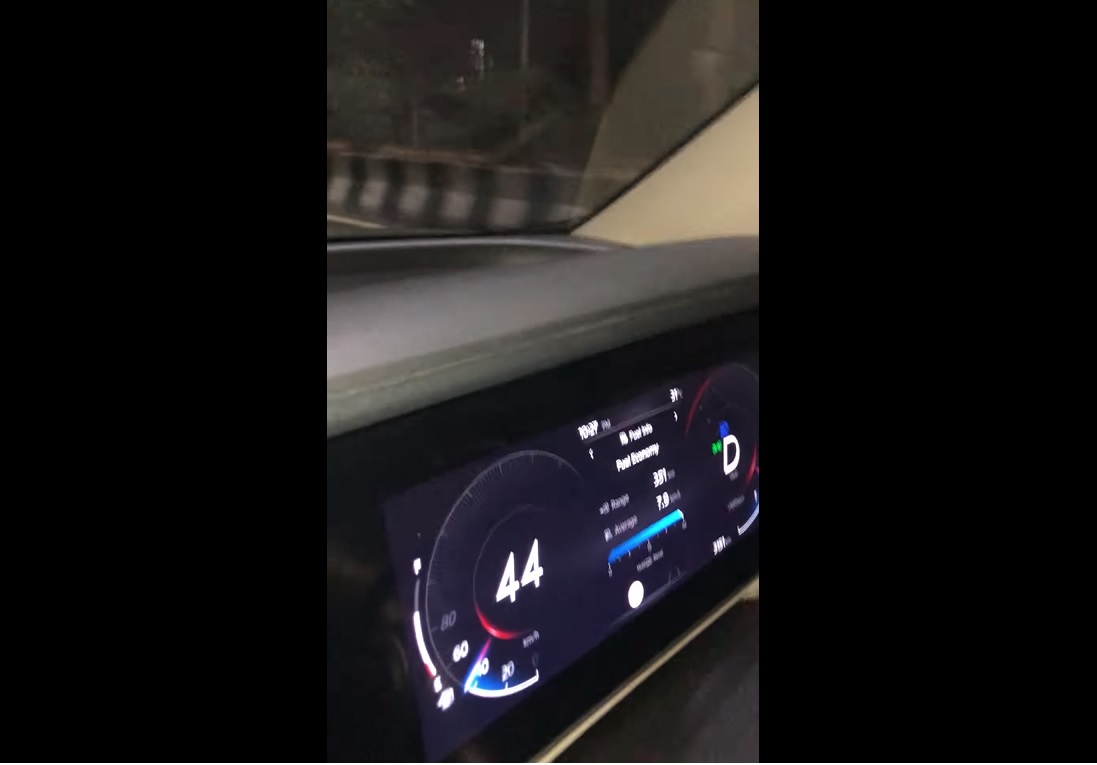
Would be great if someone could shed some light on it.
I had reached out to the service centre guy on 7th May but got no response. What should be the next step? Who should I reach out to?
Here's what BHPian impala had to say on the matter:
Was the noise actually as loud as it appears in the video? I and another person had mentioned it on Team-BHP earlier, but the noise was much lower. I had correlated it with Smart Pilot on highways. Try switching off associated features and see if the noise is still coming.
As for getting a response, try dropping an email to customer care and they would forward the issue to GM services of your last service centre. That kind of forces the ASC to follow up.
Here's what BHPian MissionManali had to say on the matter:
Please check the speakers, looks like one of the speakers has some kind of short wiring.
Check out BHPian comments for more insights and information.
News
Maruti: Child parts for steering assembly to cut repair costs
The steering column assembly in question is used in the S-Cross, Vitara Brezza, Baleno, Baleno RS, Swift and Dzire.
The engineers at Maruti Suzuki have redesigned the steering column assembly of some of its cars and introduced child parts that should help reduce replacement costs.
The redesigned steering column assembly now comprises the shaft assembly, which includes the steering column upper with MCU, shaft hub assembly consisting of the steering column upper without MCU and the steering column lower.
According to Maruti Suzuki, earlier, the complete assembly had to be replaced due to the non-availability of child parts for the steering column assembly. With the new child parts, it will be possible to replace specific components.
The steering column assembly in question is used in the S-Cross, Vitara Brezza, Baleno, Baleno RS, Swift and Dzire.
Thanks to BHPian Leoshashi for sharing this information with other enthusiasts!
- Tags:
- Indian
- steering
- Maintenance
- repairs
News
Weird sound from the steering wheel in a Maruti Suzuki Dzire
It is amplified if the steering is turn towards one side and I cross a speed breaker. The sound does not comes while going over a pothole or speed breaker with a straight steering.
BHPian Sounak04 recently shared this with other enthusiasts.
I have a Maruti Dzire ZDI AMT (bought in March 2018). The car has clocked around 51000 km till date.
Recently, I have started noticing this khat khat sound coming from the steering wheel when turning the wheel towards left or right. It is amplified if the steering is turn towards one side and I cross a speed breaker. The sound does not comes while going over a pothole or speed breaker with a straight steering.
I did find any changes in the weight or feel of the steering. It might be due to that fact that the Dzire has a very bad steering which does not weigh up properly.
I feel that the sound is coming from the Steering Rack, though I might be wrong.
I just wanted to know if anyone can tell me what the issue is. Also, my car is under Extended Warranty and if its the Steering Rack, will the same be covered under EW. I have 3.5k km more to cover before servicing. So is it advisable to drive for 3,500 km more or should I immediately go to the Service Center?
Here's what BHPian Agarwal_Aayush had to say on the matter:
To me, this looks like the driveshafts have gone bad on your car. To check these, a mechanic in my car once turned the steering completely to left or right and started moving the car at some speed, if you hear the "kat kat" noise, that is mostly the driveshaft. If its steering rack, that should be replaced under extended warranty, driveshaft I don't think will be covered under this, still there is no harm is asking for it. Do get the same checked at the MASS at the earliest.
Here's what BHPian Indian2003 had to say on the matter:
This is a typical noise with worn outer driveshaft CV-joints. Noise at left turn means the right CV-joint is worn. If the noise comes at a right turn, the left joint is worn.
Looks like both of yours are worn but they should not wear at 51,000 km. Have a look at the rubber boot for damage.
My driveshafts are still going strong at 405,000 km.
Here's what BHPian Jaggu had to say on the matter:
If it is a continuous khat khat synchronised with wheel speed, then it is a CV joint like others have mentioned. If it is sound coming from up and down movement like a bad road, then you need to check the suspension links and bushes. But most likely it is the former.
Get it attended, you don't want to be stranded in these Covid times with a broken car.
Here's what BHPian asit.kulkarni93 had to say on the matter:
Marutis are notorious for steering rack & caliper pin related issues. Please get both these things checked in addition to the stabilizer Link. If you get this sound on full turn then its your axle or the boot. Best to get it checked with a FNG first and the approach Maruti Suzuki SVC. Incase they don't honour the warranty, you can get it replaced outside.
Here's what BHPian paragsachania had to say on the matter:
You will be able to isolate between the rack, CV axle/shaft, caliper pins or suspension by following the below steps.
If it is a clicking noise, intensity of which is proportionate to the rate of change of your vehicle speed AND more prominent when you are taking turns (steering wheel in left or right position), it will be your drive shaft/CV axle.
You may also park your car on a flat (and smooth) surface, turn off the ignition and turn the steering fully to the left and right and notice any noise. A bad steering rack will be noisy and you will be easily able to notice this.
I would also suggest to first take the car to a pressure washing center, lock the wheels by turning steering on both sides, spray water on the suspension outer springs generously and then carry out the steering rack test mentioned above. At times, the outer springs of the suspension strut when they get twisted as your turn the steering also makes such noise.
Finding out if it is caliper noise is very easy. Make a fist and hit the sidewalls and a dry caliper housing will result in you being able to distinctly hear metallic clinks indicating calipers are dry with no grease and are hitting the caliper housing resulting in that noise.
Check out BHPian comments for more insights and information.
News
Maruti-Suzuki is not fixing its defective, dangerous steering
The steering has no automatic returning ability. The car holds its line and continues to turn.
Doesn't Maruti have ONE steering expert who can step in & fix this for all their cars? Why are they selling thousands of defective cars each month?
From our Official Review:
The S-Presso comes with electric power steering. It is weird, poorly calibrated and feels more like a Mahindra-tuned steering than Maruti (surprising because Maruti steerings have usually been fuss-free to use). At parking speeds, the steering should have been lighter. Some people, including women, will feel that they would have to put in a little more effort than they wish. It’s a simple fix really. Maruti should have taken care of this. The EPS is a bit vague at some speeds, and a bit too sensitive at others. A regular Joe may not notice these inconsistencies with the steering, but a BHPian who drives it for 300 km most definitely will. The steering also lacks self-centering. On a long left-hand curve of the highway and another on the Sealink bridge, GTO left the steering in the middle (of the curve). Guess what? The S-Presso held its line and continued taking the turn perfectly (the steering didn’t center back at all!!). In another instance, he took a right turn at a signal and after the turn, he left the steering. It stuck to that right turn position only. He had to manually straighten it. GTO's antique Mahindra Jeep steering needs the same straightening after a turn. We’ve hardly driven any modern car that behaves as strangely as this.
And now, a flabbergasted Ashis Mishra writes in seeking advice:
I have purchased a Maruti Ignis Zeta AMT (Petrol). I found the steering to be sticky, having no automatic returning ability and it sticks on U-turns. They said being new, the EPS is sticky and will be ok after 500 - 750 km.
After that continuously, I sent it to the service centre and they say it should be okay after 3000 km. But the vehicle crossed 8700 km and still, the steering is sticky and on U-turns, it sticks at one point with a noise!
So recently, I sent an email to the Maruti Suzuki CEO and after that, I got a call from their RSM. Their local service centre's technical expert came for inspection and made a thorough driving test. He then said it has a defect which may be fatal as the steering is very stiff & sticky which isn't normal and needs some part replacements. They then picked up the car and checked the bushes, shock absorbers etc and informed me that the steering return ability issue could not be resolved for which they kept the car for one more day to inspect the entire steering column.
Later was told that the problem is resolved and they are arranging for delivery. When I received the car, I went for a test drive with the technical expert. No effect was seen. It was with the same sticky, stiff steering with the same zero-return after turning.
The technical expert said he will change some parts and to wait for 7 to 8 days. But the very next day, the RSM called me and sent an email stating this is a feature of the car and the steering behaviour is better in upgraded vehicles.
Now, as this steering behaviour is quite abnormal, I request you to kindly advise me what action should I take so that Maruti will accept it as being faulty, and correct the same because my Ignis is under warranty.



